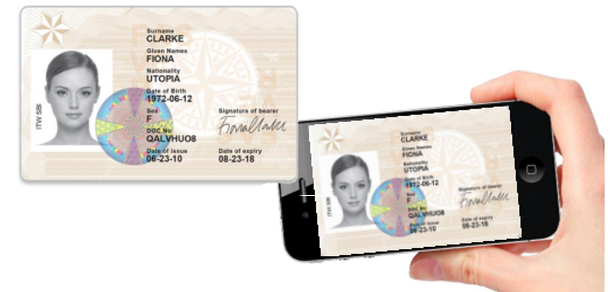Here’s why physical forms of identification are holding their own in a digital world
27 February, 2018
category: Corporate, Digital ID, Government
Digital ID is well on its way to changing the world, with the ongoing proliferation of mobile devices and the increasing sophistication and security of computing all conspiring to construct a world where physical forms of identification seem as quaint and useful as a pay phone.
Not so fast, argues a new white paper from ITW Security Division, called “The Physical ID Card is Dead – Long live the Physical ID!”.
A national or international ID scheme will always require an alternative for those who cannot afford or don’t want a smart phone
Digital ID continues to gain popularity, the paper acknowledges. “Convenience and ease of use are key drivers, together with the growth in smart phones, meaning that many are now looking for their identity documents such as national IDs and driver licenses to ultimately follow the trend towards digitalization and mobility,” the paper says.
But don’t count out physical IDs, even as smart phone apps kill the need for, say, consumers to carry around a bunch of plastic loyalty cards on key rings or inside wallets and purses. “Their ability to be carried at all times, independent of smart phones or technology, be instantly validated, and easily personalized by issuers make them an ideal solution,” the paper says.
Why physical forms of identification continues to thrive
The paper lists some of the reasons that are contributing to the durability of physical IDs:
- Smart Phone Limitations: Not all citizens and consumers can afford smart phones. The devices “are also not mandated and remain a discretionary lifestyle purchase. Therefore, a national or international ID scheme will always require an alternative for those who cannot afford or don’t want a smart phone.”
- Infrastructure Challenges: If power or networks fail, authorities may not be able to authenticate digital IDs.
- Interoperability and Standards: Yes, digital ID standards are developing, but there remain serious hurdles related to cross-platform and cross-border interoperability for mobile IDs.
- Public Trust: As mobile becomes more of a force not only in identification and commerce, criminals increasingly target those systems, which impacts how much trust the public places in cloud-based security and other technology associated with digital ID programs. “Resistance to online technology by members of the public can create issues for schemes and link with the challenge that not everyone has a smart phone,” the paper says.
- Physical Security: This stands as another trust issue for citizens and consumers, as authorities often will require that travelers and other people hand over their smart phones for authentication. “This requires the constant display of the mobile ID screen, and the need to hand over something much more than just an ID card, which may present additional privacy and security issues,” the paper says.
All that points to a relatively bright future for physical forms of identification even as digital ID gains more ground. “The two formats of ID should be complimentary rather than being mutually exclusive,” said Joanne Ogden, ITW Security Division’s global sales manager. “And having both a physical and mobile identity can help to deliver access to a complete variety of commercial and government services, improving mobility and establishing trust between members of the public and service providers.”
The white paper is part of series of resources from ITW Security. Check out the white paper here.




